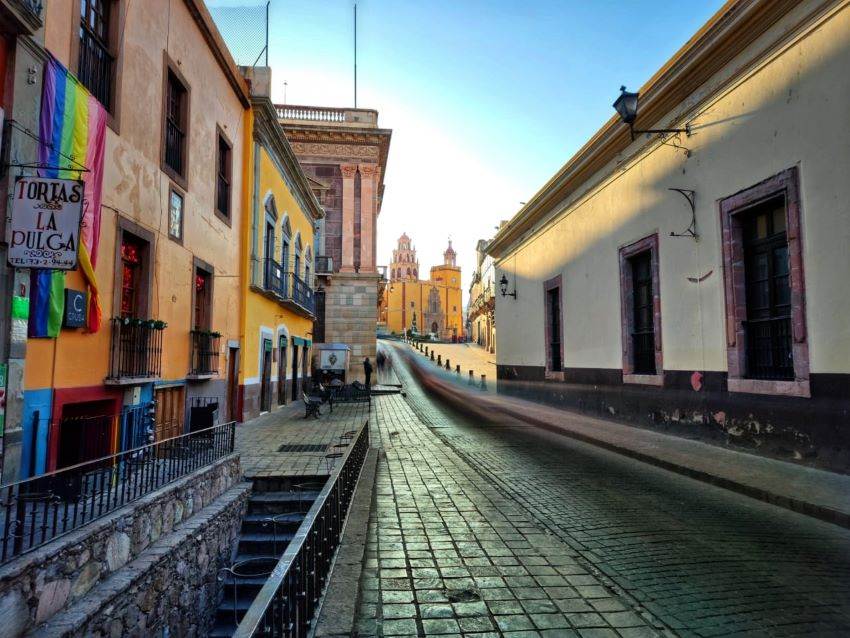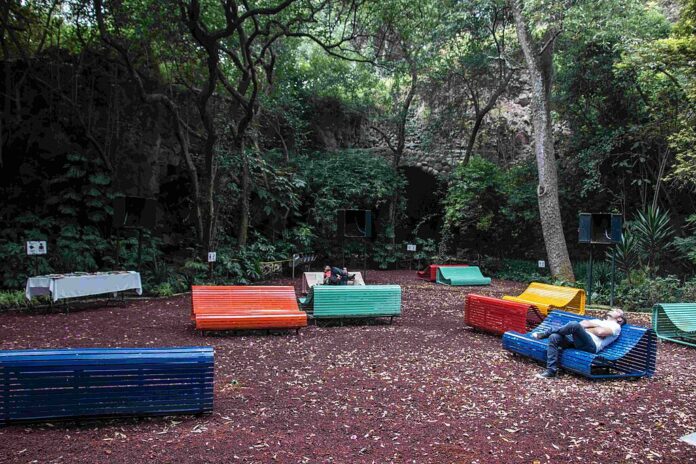A saying I once heard sometimes occurs to me in Mexico: We don’t know what we love until it’s missing. In my case, about a year after my husband Barry and I bought a home in Guanajuato, I began to miss quiet and feel irritated by the ambient noises I kept hearing: music, barking dogs, fireworks and loudspeaker-equipped trucks.
Noise is obviously subjective, and the same sound can be annoying or pleasant, depending on context. Usually, for example, I dislike the sound of traffic, but if I’m approaching the end of a long, tiring hike, the thrum of a car engine is a welcome sign that the end is near.

I noticed that the noises I objected to didn’t seem to bother most Mexicans, so it wasn’t their job to change, it was my job to adapt. While I loved Mexico, I needed to find ways to satisfy my need for silence.
Fortunately, Guanajuato is quieter than many Mexican cities, thanks to its layout. Because it’s built in a valley with steep sides, it doesn’t have the grid pattern typical of many Mexican cities. Cars can’t speed, since the streets are narrow and windy. Guanajuato is also laced with callejones, narrow pedestrian alleys that snake their way up to the Panorámica, the road that partly circumnavigates the city.
Still, Guanajuato has plenty of noise. Here are some ways I’ve found quiet in Mexico.
Wandering along the city’s callejones
I fancy myself a flaneuse — a French term meaning an urban walker — and I love exploring Guanajuato’s serpentine alleys, where I can still get lost, even after knowing the city for 25 years. They look like a Middle Eastern souk to me, with a Catholic twist. Every so often I come upon altars, shrines, mosaics of Our Lady of Guadalupe and even the occasional chapel. Occasionally I’ll hear music coming out of a house, but usually I feel a heady mix of quiet, lung-pumping exercise, and appreciation for the city’s eccentric character.

Seeking out green space and hiking areas
Guanajuato does not have as much green space as I’d like. Its tiny plaza, Jardín Unión, is crowded with restaurants, and the city’s two parks are located at opposite edges of the city, each about a half hour’s walk from our home. But a few months ago I realized I had overlooked another green space: a dry riverbed less than ten minutes away.
People don’t use it much because its access is difficult to find and its paths aren’t well-established. Yet this area has become a secret hideaway where I can lie on mottled leaves and gaze dreamily up at the branches and clouds, entirely alone; not an easy thing to do in a country where most urban parks discourage visitors from lying or even stepping on the grass.
As for hiking, one of my favorite aspects of Guanajuato is that Barry and I can walk out of our front door and, without getting in a car or bus, be in the hills within 20 minutes. We always look for hiking opportunities when we visit other parts of Mexico, too.
Sitting in churches
Unlike in the United States, many Mexican churches remain open all day. We enjoy sitting in a different church for 15 or 20 minutes every day or so, taking in the quiet, the cool and the musty smell. I also sometimes dip into a church for a break between errands, allowing myself to write in my journal, but not check my phone, which seems disrespectful to me.
Getting up early and doing errands in the morning
As madrugadores (early risers) know, quiet is not only a matter of place, but of time. I naturally wake by about 4 a.m. My early-morning hours are sacred, a time when I journal, read, do puzzles, edit articles and listen to birdsong. Later in the morning, if I have errands to do, the earlier the better, because the streets are quieter and less crowded.
Not all these options that I can enjoy are available everywhere in Mexico. Callejones, for example, are rare. On the other hand, many Mexican towns have bigger parks and more squares than Guanajuato does, because their downtowns aren’t confined by geography. When visiting other areas, I seek out libraries, museums, hotel lobbies and the local cultural center, the Casa de la Cultura. I particularly enjoy the ambiance of hotel lobbies, where I can sit undisturbed in an overstuffed chair watching the people come and go.
It’s funny: I’ve become so used to the noise level in Mexico that when I go back to the U.S., it seems strangely empty and quiet. Too quiet. Where is everyone? Where are the mime artists, the street musicians, the guy selling tamales? Now that I can find quiet whenever I need it, the typical sounds of Mexican life rarely bother me anymore. In fact, they make me happy.
Louisa Rogers and her husband Barry Evans divide their lives between Guanajuato and Eureka, on California’s North Coast. Louisa writes articles and essays about expat life, Mexico, travel, physical and psychological health, retirement and spirituality. Her recent articles are available on her website, authory.com/LouisaRogers
